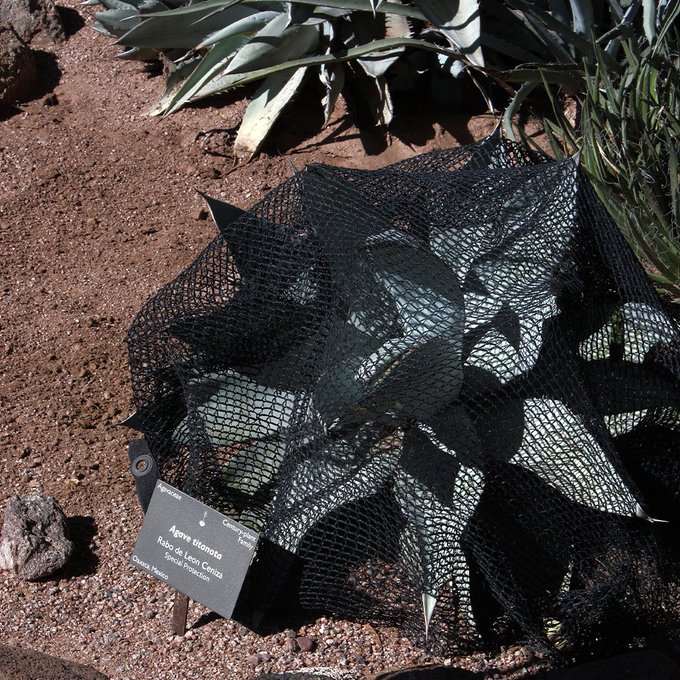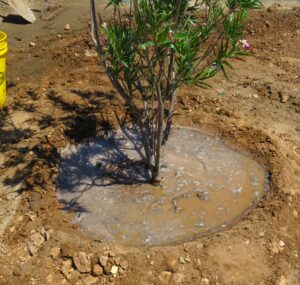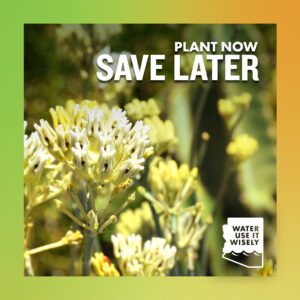Why Fall Planting Rules!
Spring is a wonderful time in Arizona, but in the low desert the season is very short and ends quickly with the intense heat of early summer. The garden centers and general theme for spring nationwide is, “now is the time to get those gardens and plants in”, when in many cases in the low desert we are setting our landscape plants up for failure. Transplanting can be stressful for plants as we are changing their environment, watering schedule, sun exposure, and soil type. The key to successful plant establishment happens when we can get the roots to thrive and expand in the new location to support the new growth, and to help combat the added stressors above ground.
A plant that has been in a 5- to 15-gallon pot will need some time to properly expand their roots deeper and wider than that original pot shape. Ideally, a plants root structure underground should be about the same size as the canopy above, though spreading much wider in the case of trees.
Our job as gardeners is to give extra TLC to the new plant during those first few critical months. That means a little more watering as it adapts to its new surroundings, and to encourage roots to grow out beyond the initial root ball from planting. It might be a good idea to provide some shade in the first summer to let the plant adapt to the sun and location.


Let’s run through a few scenarios about planting at different seasons to see what you think could lead to problems.


Gardener A plants a new low water use tree, an Cascalote, in mid-April. Gardener A follows the nursery guidelines and has the root flare at the base of the tree (or top of first root) above the surface (not planted too deep). They have dug the hole two times wider than the size of the pot it came in. They even splurged and bought the bigger tree, one in a 24” wooden box, for that instant shade in their yard! A not-uncommon heat wave comes in mid-May and we start to see temperatures of 105° or more. By the end of May we are seeing frequent days of 110°, and May is our windy month, which increases evaporation. Gardener A has been trying to water deeply 2 to 3 times a week.
Gardener B also plants a low water use tree, a Desert Willow, but they planted the past October. They follow the same nursery guidelines making sure the tree is not planted too deeply and that the hole is wide enough. They chose a 15-gallon tree, so that the roots are younger and have been circling in the pot for less time. This tree starts getting deep watering 3-4 times a week, then down to 1 time every 10 days as the temperatures cool in winter. There is one night that goes below freezing, but the tree is frost tolerant. This tree is now into May as the heat increases and the wind blows, the same time as the Cascalote in Gardener A’s yard.
Which plant do you think will survive and thrive through summer? Are you Team Gardener A or Team Gardener B?
Gardener A Because they did follow the proper planting guidelines and were watering correctly, the Cascalote may have survived by the end of summer, but it will be a 50-50 chance. The tree only had one month in the ground to acclimate to the new location before the extra stress of the heat set in. May is our windy time, and then we soon get monsoon winds in July. It is very possible that the tree could have endured wind damage as an undeveloped root system and continued stress take its toll. Because this was a larger box tree growing longer at the nursery, there is a chance they have developed girdled roots and a higher chance of failure within a few years of planting.
Gardener B By choosing a smaller tree to start with and planting it the previous fall, this tree had 8 months in the ground growing and adapting before the heat arrived. It had already almost doubled in size from when it was first planted. Gardener B also followed the proper planting guidelines and was watering correctly, so the tree was thriving and was not already in stress when the heat of May started. This tree has an excellent chance of surviving the summer and should have a more resilient root system.
What is the moral of this story?
Fall in the low desert is the ideal time to plant in the landscape. Planting in the spring leaves only a few months at best for new plants to get acclimated and established in their location. There is even talk of trying to move “Arbor Day” plantings and celebrations to October because planting trees in the desert, for an April Arbor Day, is not ideal. Join us and let’s make fall the new spring for the low desert!
Fall Planting with Water – Plant It Wisely
At Water – Use It Wisely, we take pride in the quality of information on our pages. That’s why we created a special micro-site to help you find our favorite pages all in one place. On our fall Water – Plant It Wisely site, we showcase planting, low-water use plants, how to plant, desert landscaping, design ideas, and helpful resources to help.
Be sure to visit Water – Plant It Wisely, and dig in!
Victoria Caster is a Sustainability and Water Conservation Coordinator with the City of Peoria, AZ, one of 20 Water– Use It Wisely partners to offer water-saving advice and programs. Victoria is a Master Gardener and overall nature aficionado. Being a Arizona native, she sees the shift and need locally to educate and help people embrace our unique desert.


